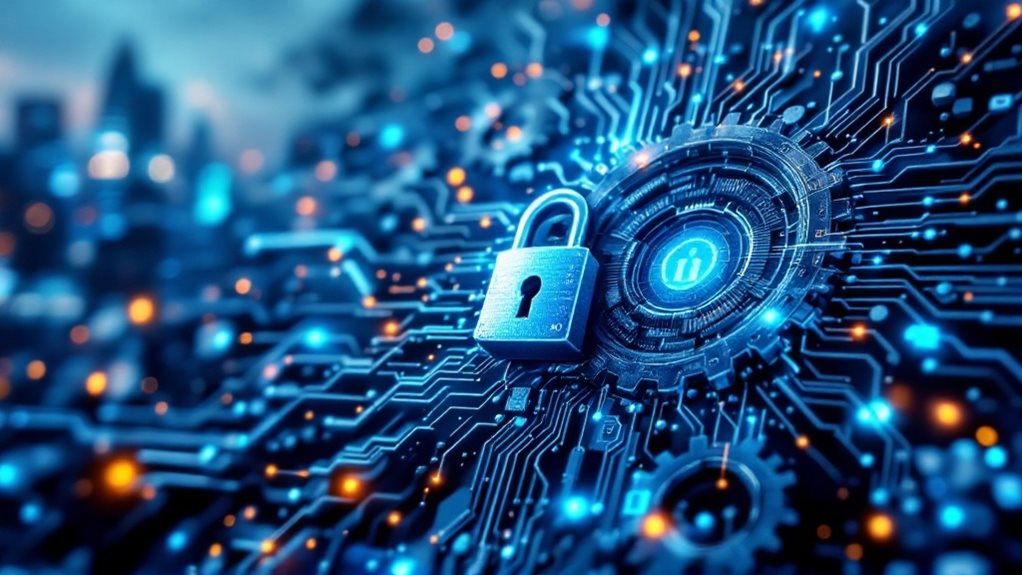A cryptosystem is a digital security tool that turns regular text into secret code that only specific people can access. It's like a high-tech safe that uses special algorithms to scramble and unscramble sensitive information. The system relies on encryption keys, which work like unique passwords, to protect data during storage and transmission. Modern cryptosystems help secure everything from online banking to private messages. Understanding these systems reveals the backbone of digital security.

A cryptosystem is like a digital safe that protects sensitive information. It's made up of special algorithms that work together to encode and decode messages, turning regular text into scrambled code and back again. Think of it as a secret language that only authorized people can understand. When information needs to be protected, the cryptosystem converts it from plaintext (normal, readable text) into ciphertext (encrypted, unreadable text). Key management plays a vital role in maintaining the security of the entire system.
The main parts of a cryptosystem work together like a well-oiled machine. There's the plaintext, which is the original message that needs protection. Then there's the ciphertext, which is what you get after the message has been encrypted. The encryption algorithm does the job of scrambling the message, while the decryption algorithm unscrambles it. Keys are special values used in this process, kind of like the combination to a lock. Statistical attacks can exploit weaknesses in random number generation, making robust key generation crucial.
There are different types of cryptosystems, each with its own way of handling keys. Symmetric key encryption uses the same key for both encryption and decryption, like having one key that both locks and opens a door. Diffie-Hellman key exchange can be used to securely share symmetric keys between users. Asymmetric key encryption uses different keys for encryption and decryption, similar to having a key to lock a door and a different key to open it. Hash functions are special because they only encrypt data without any way to decrypt it – it's a one-way process.
Cryptosystems aren't just theoretical concepts – they're used everywhere in our digital world. They keep our stored data safe, help create digital signatures that prove who wrote or sent something, and make sure people can exchange keys securely when they need to communicate.
They're constantly being updated to stay ahead of new security threats, kind of like how banks update their security systems to stop new types of theft. These systems also help organizations follow privacy and security rules. They're crucial for protecting things like online banking, secure messaging, and confidential business communications.
Public key cryptosystems, which use asymmetric encryption, are particularly popular for internet security, while private key systems using symmetric encryption are often used when speed is important. As technology advances, cryptosystems keep evolving to provide better and stronger protection against increasingly sophisticated security threats.
Frequently Asked Questions
How Long Does It Take to Crack a Modern Cryptosystem?
Cracking times for modern cryptosystems vary widely based on several factors. An 8-character password might take 21 hours to crack, while a 16-character one could take trillions of years.
Today's standard 128-bit encryption is nearly impossible to break with regular computers. However, future quantum computers could crack some systems faster – like breaking 2048-bit RSA in just 8 hours. But that'll need much more powerful quantum computers than we currently have.
Can Quantum Computers Break All Existing Cryptosystems?
Quantum computers can't break all cryptosystems equally.
They're mainly a threat to public-key systems like RSA and ECC.
Symmetric encryption, like AES, is less vulnerable but might need bigger keys.
Hash functions will likely stay secure with larger outputs.
While quantum computers could crack some current systems in hours, it'll probably take 20-50 years before they're powerful enough to be a widespread threat.
Which Cryptosystem Is Considered the Most Secure in 2023?
The Advanced Encryption Standard (AES) with 256-bit keys remains the most secure widely-used cryptosystem in 2023. It hasn't been broken despite decades of attempts.
The newer post-quantum algorithms like ML-KEM and ML-DSA are also highly secure, especially against future quantum computer threats.
Google's X25519Kyber768, which combines traditional and quantum-resistant methods, shows promise as another top contender for robust security in today's landscape.
Are There Any Truly Unbreakable Cryptosystems in Use Today?
There aren't any truly unbreakable cryptosystems in widespread use today.
While the one-time pad is theoretically unbreakable, it's not practical for everyday use because it needs randomly generated keys that are as long as the messages.
Modern cryptosystems like AES and RSA aren't technically unbreakable, but they're considered secure enough for now.
They rely on math problems that are too hard for today's computers to solve in a reasonable time.
How Much Does Implementing a Commercial-Grade Cryptosystem Typically Cost?
Implementing a commercial-grade cryptosystem typically costs between $50,000 to $500,000. The price varies based on several factors.
Initial development and design takes up about 35% of the budget. Infrastructure and software expenses account for another 30%. Deployment and training costs make up 20%. The remaining 15% goes to maintenance and support.
Smaller businesses often spend less, while large enterprises with complex needs spend more.





